Our first two cruises. Continue reading
In the mid-eighties we finally took two real vacations, one in 1985 and one in 1986. We had such a good time on the first one that we tried to replicate the experience the next year, but, of course, it turned out to be rather different.
Sue and I discovered that we could spend a week in February cruising the Caribbean for only about $1,000. The price included air fare from Bradley to Miami. Curt Hussey had advised me that cruises were the best kind of cruises. You could do as much or as little as you wanted, and there was no hassle at all.
This plan suited me. I have always said that the only good thing about February is that it is short. We made reservations for a seven-day cruise on the Song of Norway, a ship of the Royal Caribbean Cruise Lines (RCCL), in the western Caribbean. It would start and end in Miami.
By the end of 1984 the business seemed to be doing a little better. Hiring Denise Bessette and Kate Behart had worked out well, and we actually had a little money in the bank. We notified all of the clients that we would be gone for a week. We would try to stay in touch, but it might be difficult on some days.
We did no research at all for either of these cruises. We were simply looking for warmth, pleasure, and relaxation. There was nothing wrong with that, I suppose, but on subsequent long trips I totally changed my mind about the objectives of traveling to distant locations.
Neither Sue nor I had a credit card. I don’t think that we would have brought hundreds of dollars in cash. We might have bought some travelers’ checks.
It is hard for me to believe in retrospect, but at the time we had no pets! So, all we needed to arrange was transportation to and from the airport. Perhaps one of the employees drove us to the airport, and one of Sue’s sisters picked us up. We might have taken a cab. Maybe we left one of the cars at one of the parking lots that surrounded the airport. Some offered weekly rates.
It was, of course, very cold when our plane took flight from Bradley in the morning and warm when we arrived in Miami around noon. However, the differential was not as great as the time that Bill Davey and I flew there from Detroit in 1970, as described here.
I remember that we were met at the airport by a representative from RCCL. I think that they provided transportation to the port. My recollection is that we were allowed to board pretty much immediately.
The cruise itself got off to a rocky start. Somehow our luggage got misplaced. The staff told us that they would get it for us, but we would need to do without until the next day. This was a problem because the first night’s supper, which had open seating, was the only occasion of the entire trip that was designated as somewhat formal. Everyone else was dressed up. As it turned out, our attire was a pretty good ice-breaker. Everyone was sympathetic when they heard about our problem.
Fortunately, that was our last real problem. The rest of the cruise was absolutely delightful.
Sue told me that she recalled that there were only 750 passengers, but the ship’s passenger capacity then1 was actually 1,196. There may have been some empty cabins, but I do not remember a lot of empty tables at dinner.
We did not have our luggage that first night, but our employees (or maybe it was Tom and Patti Corcoran), ordered a bottle of champagne for our cabin. I think that RCCL gave us a fruit basket, too.
We got the cheapest cabin available. It had no view, twin beds that were pushed together, a small bathroom, and a desk. It was about as small as could be imagined. I did not intend to spend much time there. Sue complained about the size of the shower, but I found everything satisfactory. She also objected to the cabin steward going through her luggage every afternoon to find something sexy to lay out on her bed. My recollection is that nearly all of the cabin stewards were Filipinos.
The ship seemed gigantic to us, totally oblivious to the puny waves below us. By twenty-first century cruising standards, however, it was a canoe.
The ship each issued each passenger a credit-card sized piece of plastic. This card served as an identity document in getting on and off the ship and as the means of payment for anything on the ship. It was possible to avoid most expenses, but even a penny-pincher like me ended up spending hundreds of dollars on excursions and tips.
Although we eventually sailed as far west at the Yucatan Peninsula, the ship stayed on Eastern Standard Time throughout the cruise.
The ship’s first stop was at a private island owned by RCCL, now called CocoCay2, where the staff put on a picnic lunch. There were a few other activities in the afternoon as well, but there was nothing very elaborate. There were plenty of picnic tables, some volleyball courts, and some trails. Basically, it was just a place to relax for a few hours and get to know a few of our fellow cruisers. I took a little hike, but there was nothing much to see.
Back on the ship there were two seatings for supper: 6:00 and 8:00. I would have much preferred to eat at six, but Sue protested that she needed to get cleaned up and dressed, and she has never liked being rushed. So we ate at the second seating. The down side was that the after-supper entertainment was too late for a morning person like myself.
We ate at the same table every evening. Some tables were larger, but ours had only four chairs. Our dining companions were a couple from Wisconsin who were about our age. The same waiter served our table every evening. Ours was from Greece. I forget his name, but all four of us rapidly became very enamored with him. The menu changed every night. There were three or four choices for the entrée. The selection was good, the quality was good, and the quantities were unlimited.
Needless to say, the couple from Wisconsin were sheepshead enthusiasts. They were excited to hear that we had played the game, an event that is described here. We agreed to play with them as well if they explained ALL the rules to us. They listed them in a couple of minutes. I protested that I was certain that there were additional rules. They insisted that it was a simple game.
This time we got to the third or fourth hand before the first undisclosed rule made its appearance. Others soon followed. I am convinced that all people from Wisconsin are given at birth two sets of rules, one that they disclose to foreigners and one to mention only when they apply.
We were surprised that there was so much to do on the ship. In the movies there only seemed to be four activities on cruise ships: dancing, shuffleboard, sitting on deck chairs, and gazing at the stars in formal attire. On most days I tried to run on the Promenade Deck, but it was very boring. A lap was only about one tenth of a mile. Also, you had to dodge strolling passengers and be on the alert for slippery spots.
I had no interest in shopping in any of the ship’s stores or losing money in the on-board casino. I spent as much time as possible in the sun by the swimming pool drinking free Diet Cokes or iced teas.
Our route to Jamaica took us between Hispaniola (Haiti and the Dominican Republic) and Cuba. In fact, Cuba was visible on the starboard (or as we say in Kansas, “right”) side of the ship for most of the first part of the cruise and on the port side on the return voyage.

The second stop was at Ocho Rios on the south side of Jamaica. West of the harbor was a large brick-red wooden factory that produced aluminum, which the locals pronounced with an extra syllable as the British do, from locally mined bauxite.
Several excursions were offered. I wanted to climb the rocks at Dunn’s River Falls. I was surprised that Sue was willing to try this. She never has felt comfortable around open water. The rocks were as slippery as they looked. The suggested footwear was sneakers with no socks.
Our guide’s name for the excursion was named Philippe. His reply to almost any statement or question was, “No problem.” A group of us were driven by van from the harbor to the falls. We stopped once or twice. Philippe told us to get out and “take your lovely shots.” I did not have a camera, but I was happy to stretch my legs.
When we reached the falls, we formed a single-file line and held our neighbor’s hand tightly. Several people were to scared to try the ascent, but even Sue managed to get all the way to the top.
Sue took several photos of this and our other stops, but I have not been able to locate them.
The excursion took a few hours. After lunch Sue and I walked into town. I still had my beard and could have easily been mistaken for Tommy Chong’s younger brother. At least three times I was approached by people who offered to sell me marijuana. There were a lot of souvenirs on sale there. I might have bought a postcard or two, but no souvenirs.
I think that we took a second excursion in the afternoon, but this may have been in 1986. In any case we went green-water rafting on Martha Brae (MAR tuh BREE), a very slow moving stream. Our guide for this adventure was named Nigel.
The rafts were made of bamboo. They had seats toward the back for the passengers, but the “captain” stood in the front and directed the raft with a long pole. According to Sue our captain’s name was Tony.
The experience was very relaxing, but I don’t think that very many people would do it twice. On the road from Marta Brae to the harbor our guide pointed out a large dwelling by the sea. The house had belonged to Arthur Ashe, the famous tennis player who died in 1980. At least that is the way that I remember it. I could find no support for this on the Internet, but he had been dead for four decades when I googled it.
Most of the suppers had themes—Italian, French, Mexican, etc. Every meal was tasty, filling, and fun. The waiters and the other staff members dressed for the occasions. There was also music, and the waiters marched around and waved to the people at their tables. It was very festive, and, in my opinion they managed to make it fun without too much kitsch.
The third stop on the cruise was in George Town on Grand Cayman. Unlike most other islands in the Caribbean the Caymans are NOT mountainous or even somewhat hilly. They did not appear on the horizon until the ship was almost there.
The islands have an interesting history. They were discovered by Christopher Columbus on his third voyage. No evidence of an indigenous population has been discovered. For years the islands served as a haven for pirates. They have been a British territory since the middle of the eighteenth century. They have never had income, wealth, or capital gains taxes. We heard the story that the British king issued a decree that England would never tax them because he was grateful to the colonists for saving one of his family members.3 We did not learn about the slavery. When it was finally abolished in 1833, 950 Black people were enslaved by 115 white families.
In the eighties the Caymans had not yet earned renown as a place to hide dodgy funds. We were surprised to learn that the country had more teletype machines per capita than anywhere else on earth. In fact, even by then there were only two sources of income there—tourism and tax evasion.
The contrast between Ocho Rios and George Town was striking. Jamaica seemed like a very slow and backward place that had a few interesting attractions. The people all seemed devoted to selling knickknacks of no utility. Nothing had a fixed price. There were only a few stores. Transactions generally took place on the street.
George Town, on the other hand, was a clean and modern town. No one tried to sell anything on the street. I did not feel as if I had to keep my hand on my wallet.
There was not much to do in town if you were not interested in buying duty-free jewelry. I think that a snorkeling excursion was available, but it did not interest me that much. I probably would have enjoyed it, but I knew that when I left the water I would be shivering for a half hour or so.
The spectacular beach by George Town is seven miles long. The hotels jealously protected their portions. RCCL had an agreement with one hotel that its passengers could hang around at the beach. That was good enough for me. After a once-around in the town, I parked myself on a towel on the beach and read a book.
Sue has always been averse to both sun and heat. She spent most of her time in Grand Cayman nosing around the shops.
The ship made two stops in Mexico. The first was at Playa del Carmen, which is south of Cancun. About half of the passengers departed from the ship in Playa. Of those most went up the coast to the resort town of Cancun. We joined the group that had signed up for the excursion to Tulum, an ancient Mayan city located about fifty miles to the south.
We had been warned by the cruise directors about the street vendors in Playa del Carmen. As soon as we set foot on land we were all set upon by people selling stuff, mostly extremely low-grade silver jewelry. It was a little difficult even to make it to our buses.
I have a few pretty clear memories of Playa Del Carmen. It seemed like a very poor town to me. Very skinny dogs roamed the streets. No one from our ship considered stepping into one of the stores. Based on the photos that I have seen on the Internet, I would guess that things have improved there at least a little.
The bus ride to Tulum was hot and boring. I think that they served Mexican Coke on the bus. The land was perfectly flat, and there were almost no towns at all. There appeared to be lots of trees, but none grew very tall. Only a few locals could be seen, and they all seemed destitute or nearly so. We saw very little traffic.
I don’t remember the town of Tulum at all. Apparently it has become a tourist destination in the intervening years. It certainly was not on anyone’s bucket list in 1985.
I remember the area just outside of the ruins. Flimsy booths were set up so that some of the local people of Mayan descent could sell things. I seem to remember that the main thing that they sold was cloth. There were no souvenirs.
The ruins area was, I am pretty certain, surrounded by stone walls. On the other side of the walls was jungle, not like in the Tarzan movies, but a sea of trees, none more than twenty feet high. On one side from the top of the wall you could see the sea and a lovely beach, but there was a cliff between the wall and the sea. Waves were smashing against the rocks. The beach did not look inviting that day.
We did not have a guided tour. We were told to meet back up at a particular time.
The big attraction was the temple in the middle. I climbed all the way up to the top and looked around. It was pretty impressive. We had already been told about the carvings of the “descending gods” that festooned the temple and some of the other buildings. Some people have taken this as an indication that the Mayans had been visited by extraterrestrials, who created these stone cities for them.
The ruins area was not very crowded. Almost everyone there was from our ship. That has no doubt changed in the intervening years.
From Tulum we drove up the coast to Xel-Há4 (pronounced shell-hah), which is a beautiful lagoon. I think that we ate lunch there. I don’t remember much about this place, but it had some facilities.
After lunch most people took a quick dip in the lagoon’s waters. I don’t remember if I did or not. I doubt it.
The bus then returned us to Playa del Carmen, where we took the ferry to the island of Cozumel. By that time it was the middle of the afternoon, and it was extremely hot. In those days, however, I could stand just about any amount of heat. I decided to walk by myself into the town of San Miguel, a resort town that was a mile or more from the harbor. Sue shopped at little stores on the pier.
There was not much to see in San Miguel. A goodly number of the ship’s passengers were enjoying drinks in a bar there.
I was happy that I made the journey. I got a little exercise, and I saw dozens of iguanas of all sizes. I stopped to watch them several times. Some were large enough that if they had made aggressive moves I would have been frightened. They mostly just sat on rocks, and they were all grey. Nevertheless, I felt the pure sense of joy that I have always seemed to feel whenever I unexpectedly encountered wild animals in their native habitats.
The last leg of the cruise was a long day at sea sailing past Cuba back to Miami. I am pretty sure that it took two nights and one day.
One of the highlights of the trip for me occurred on that last day. The cruise directors had announced that if anyone had purchased something at one of the stops and could no longer remember why they did so, he/she should bring the “white elephant” to the staff. They planned to hold an auction to try to regain something for the disgruntled purchaser. The auctioneer was very talented. He invented provenances and romantic attributes for each item, no matter how junky. Most of them were sold, a few at a profit.
Here are some other things that I remember from the 1985 cruise:
- I went with Sue to a line-dancing class. She participated. Of course they taught “Achy Breaky Heart”, but there were not enough cowboy hats to go around. I watched for as long as I could stand it.
- There was a midnight buffet every night. Since most passengers gorged themselves at all three meals and got little exercise on this cruise, I was surprised how popular this was.
- The Viking Crown Lounge was one of the highest points on the ship. It was pretty much de rigeur to visit it, have a drink, and gaze at the horizon. We did, but only once.
- There were very few children on the cruise. The cruise staff formed them into a club and arranged activities for them. For the most part the kids were invisible.
- The cruise staff also organized activities and games at poolside almost all day long. I found them annoying. I wanted to read. Nevertheless, I was embarrassed that they stumped me when they asked who sang the hit song, “Winchester Cathedral”. It was the New Vaudeville Band. I should have remembered it. It was released in late 1966, when I was at Allen Rumsey House. If, God forbid, it had been on our juke box, I probably would have known it. I did not listen to Top 40 music in Ann Arbor.
- A small newsletter was pushed under the door every day.
- I think that our room had a TV. After we left Miami it showed only short films about RCCL, the ship, or ports of call.
- The cruise staff conducted an orientation class about each of port of call. I went to most of them. They were not well attended. The guy giving the one on Ocho Rios emphasized that the town was a good place to purchase some straw if you needed any.
- Sue went to some of the shows at night. She has always loved live entertainment of almost any stripe. I might have gone once.
Sue and I both had a great time. The trip itself was both relaxing and entertaining. I liked the fact that I had absolutely no responsibilities. Sue liked being able to set her own pace. She probably would have preferred cooler weather, but it does not really ever get cool in the tropics.
The timing was perfect. When we left, we were both grouchy with cabin fever. When we returned, it was almost time for Sue’s birthday and, shortly thereafter, spring. We promptly called the travel agent—another common occupation that has almost disappeared in the intervening decades—to go on essentially the same cruise in the following year.
The second cruise was similar, but not identical. We flew non-stop to Miami again. We were met by the RCCL people again. They did not misplace our luggage this time. After the very first stop the schedule was almost identical.
Over the winter two big things had happened at RCCL. The first was that the Song of Norway won all of these awards from World Ocean and Cruise Liner Society: Best Food, Best Crew, Best Housekeeping Service, Best Dining Room Service, Best Cruise Staff, Best Ship Activities, Best Shore Excursions, Best Overall, and Ship of the Year. They had sweatshirts made that bragged about that last one. Travel Holiday Magazine also named RCCL the world’s best cruise line.
The other big development was the purchase by RCCL of an isolated peninsula on the north side of Haiti5. The name was Labadie, but the company changed it slightly to Labadee. Our ship did not go to CocoCay in 1986. On the first day of our second cruise, the Song of Norway became, I think, the first cruise ship to visit Labadee.
Before we landed the ship was boarded by heavily armed Haitian soldiers. I don’t know what their function was, but they were more than a little scary. As far as I know, however, they did not interfere with any of the planned activities.
Tthe local citizens apparently knew that we were coming. A dozen or so rowboats surrounded us as we landed. Each contained two or three of the local people. They were trying to sell their art work. Their boats do not look at all seaworthy. These people were just doing what they could to survive a very bad situation.
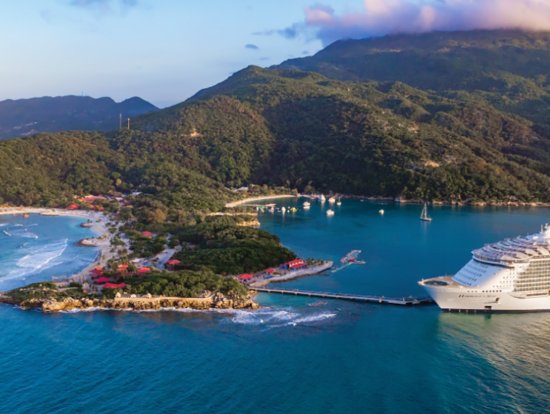
The time on shore was pleasant enough. There was not much to do.6 There might have been some hiking paths, but most people dared not venture too far from the picnic area.
Our experience here was remarkably similar to the one on CocoCay a year earlier. In fact it is difficult for Sue and me to distinguish between the two occasions.
We met our companions for supper after we returned to the ship and cleaned up. They were a couple from Long Island. Sue remembers that he owned a chain of garages there. I only remember that he ordered seconds of the main course at both meals that we ate with them. After that they arranged to join the first seating, and we ate by ourselves during the remainder of the cruise. I can’t say that we missed their company.
The seas were a little high the night after we left Labadee. Many passengers got seasick. Sue felt a little woozy, but she did not get sick. I wasn’t bothered at all, but walking in the hallways was something of a challenge. The creaking sound that occurred whenever the ship rocked was rather spooky. By morning it was smooth sailing for the remainder of the cruise.
Sue and I decided to do something different in Jamaica this time. We signed up for a trip up in the hills to an old “estate”. I did not remember the name of it. Several of these places still offer tours, including Brimmer Hall, which is the only one that sounded at all familiar. I remember that it was a long drive through very hilly country. This was the first time that it occurred to me that islands in the middle of deep seas almost have to be mountainous.
They definitely served us lunch in the plantation house. One of the offerings was goat, and I was courageous enough to try it. I would not say that it was delicious, but at least I did not get sick.
It was a worthwhile excursion if only for the fact that it got me to thinking about the geography, history, and sociology of Jamaica. The truth is that in the eighties I would never have thought of a vacation as a time to learn about other countries. I was just charging my batteries.
I knew that Jamaica had been a British colony. I did not know that in 1838 England abolished slavery, but there was never anything like reconstruction and no distribution of assets. It was more a case of “Take these broken wings and learn to fly.”
I don’t remember what we did in Grand Cayman. We might have taken an excursion. I seem to remember something about turtles.
I did not think much about Grand Cayman’s sociology either. I don’t remember seeing many Black people, certainly nothing like in Jamaica.
The one excursion that we repeated was the one that featured Tulum and Xel-Há. We were a little disappointed. The area of the Tulum ruins was considerably more crowded that it had been the previous year. Also, visitors were no longer allowed to climb or walk on any of the ruins. I suppose that it is only reasonable to take every effort to preserve them for posterity, but it was still disappointing.
I remember a few other things about the 1986 cruise.
- We did not fall in love with our waiter this time. He was nice enough, but I don’t even remember his home country. The waiters (I don’t remember even one waitress or cabin stewardess on either cruise) were from all over the world.
- I have few memories of the other passengers. I do remember one fellow with whom we talked a few times. His wife never left the ship. She shopped for jewelry in the ship’s store.
- On both trips the official photographer took lots of photos of us. They posted them in one of the public areas of the ship. The only way to get them to remove your photo was to buy it. We bought a couple on the first cruise, but not on the second.
- The only obnoxious part of the cruise was the semi-mandatory tipping. The maître d’ and the sommelier both appeared at our table for the first and only time at the last supper before it was tip time.
We could not afford to go on vacation in either 1987 or 1988, but in 1989 …
1 .In 1977 RCCL took the Song of Norway out of service, cut it in two, and added a large new piece in the middle. This feat increased the ship’s passenger capacity by 40 percent. The ship’s fuel consumption was only slightly increased, and the seaworthiness was not affected at all. The ship was sold in 1996 to another cruise line. Over the next few decades she changed hands and names several times before being sold for scrap in 2013.
2. RCCL subsequently invested hundreds of millions of dollars in this island and turned much of it into a gigantic water park for its customers. It is now officially called “Perfect Day at CocoCay”, which makes me think that the company pronounces the last syllable like the letter “K” rather than like the word “key”. An aerial view is shown at the right.
3. Wikipedia says that this story is not true. The evidence cited is here.
4. The area that we visited is now called Xel-Há Park. It still has the lagoon, but it also offers a water park, a buffet, a zip line, and other diversions. The website is here.
5. Haiti was in the middle of a coup. The ruler, Jean-Claude “Baby Doc” Duvalier, had fled to France on a plane supplied by the U.S. on February 7. He had named a commission to govern in his absence.
6. In the twenty-first century there are plenty of activities available on Labadee. A list of them is in an article posted here.

 1985-1986 Life in Rockville: The Two Cruises
1985-1986 Life in Rockville: The Two Cruises

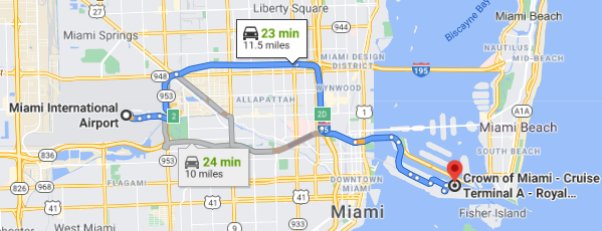
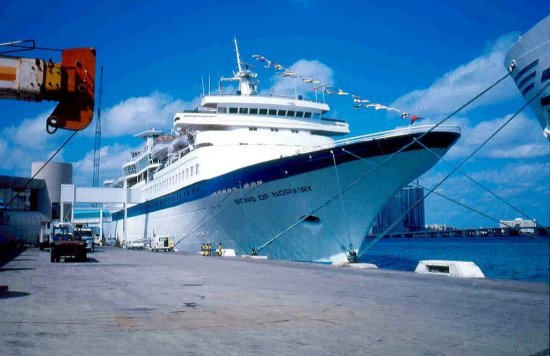

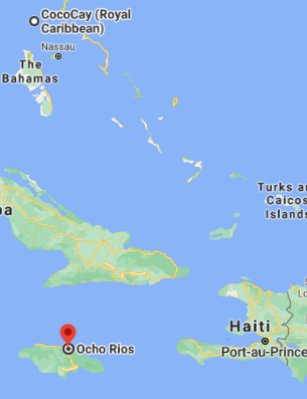
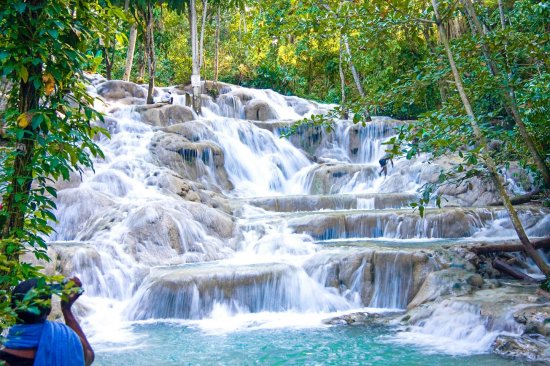
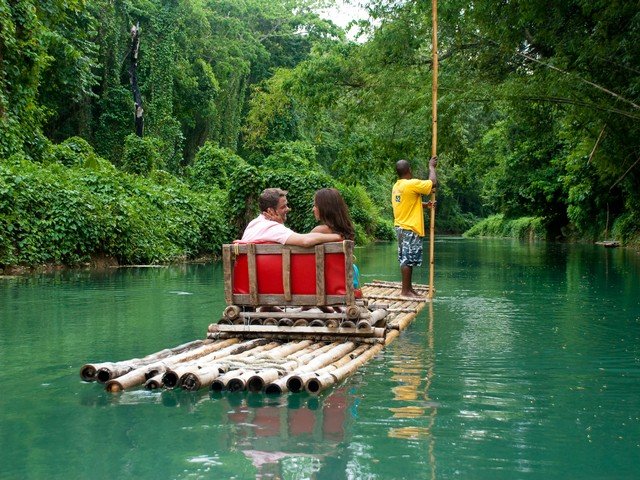
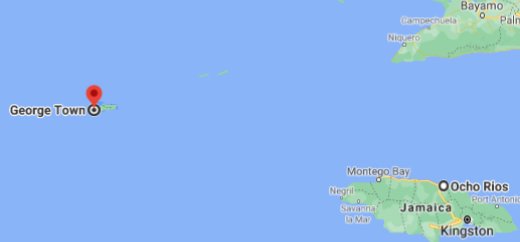
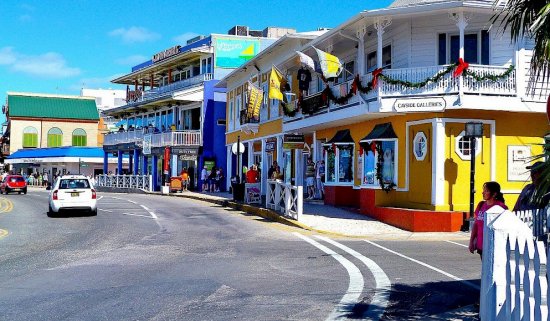
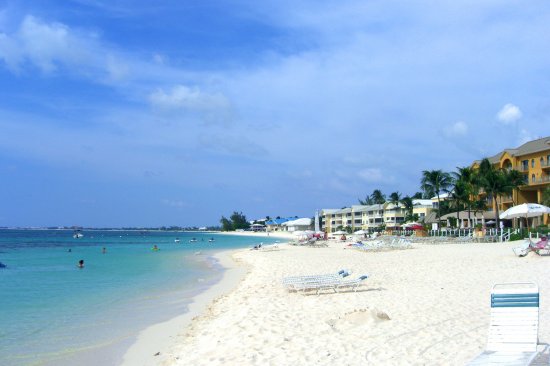
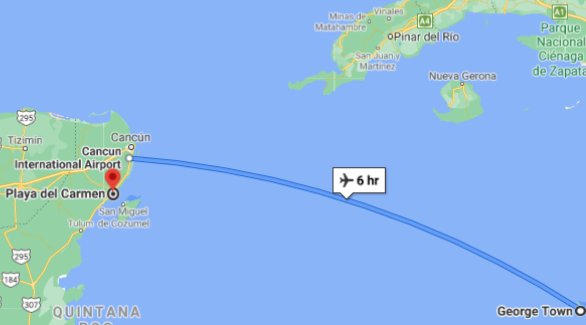
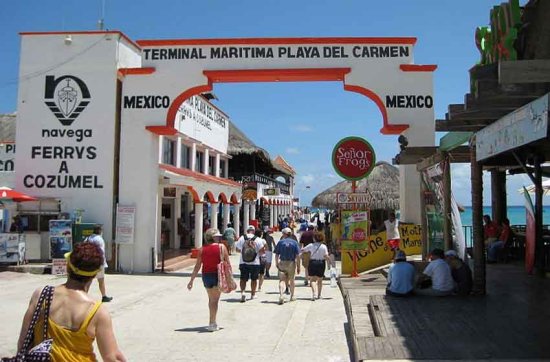
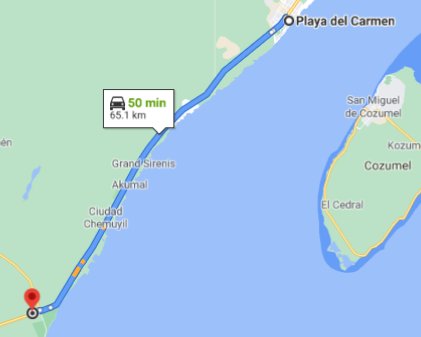

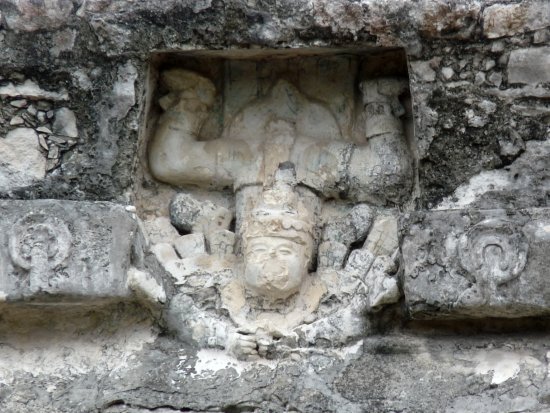
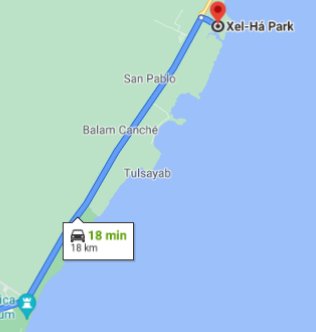
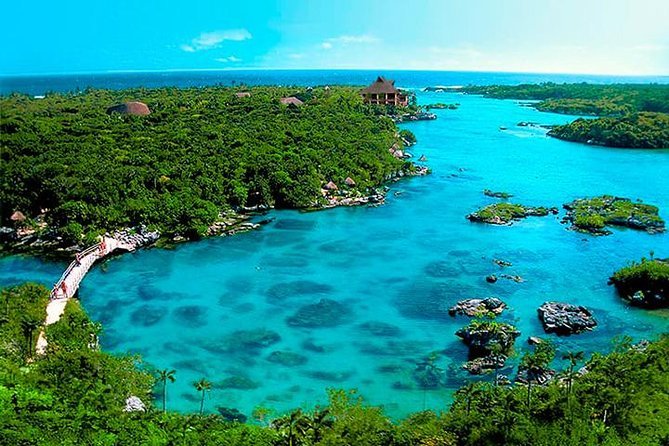
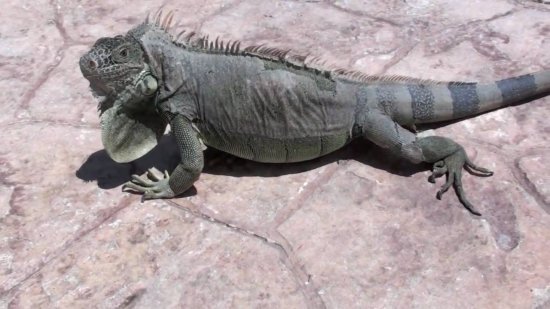
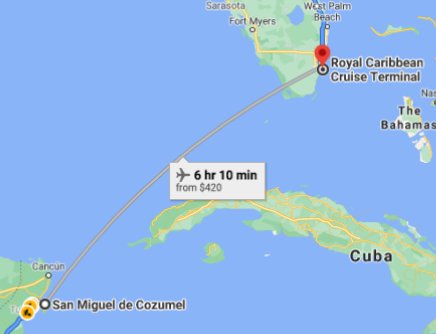
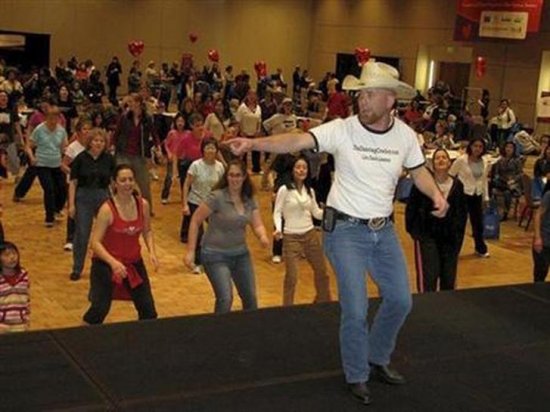
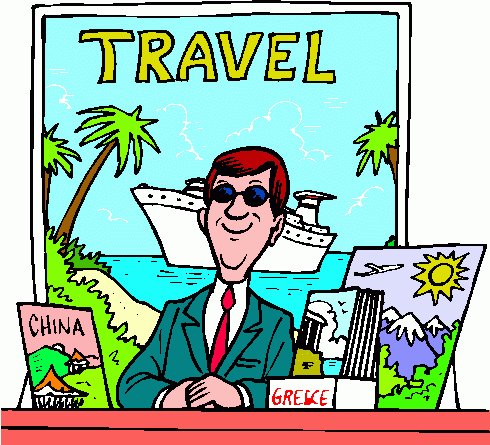
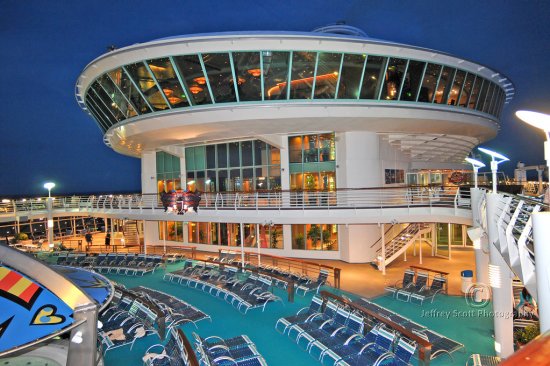
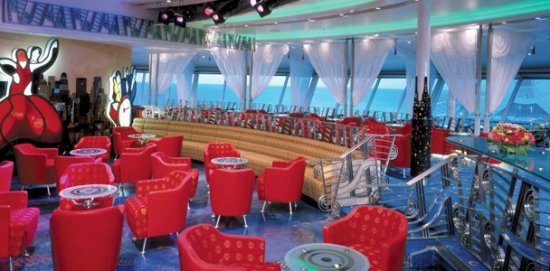
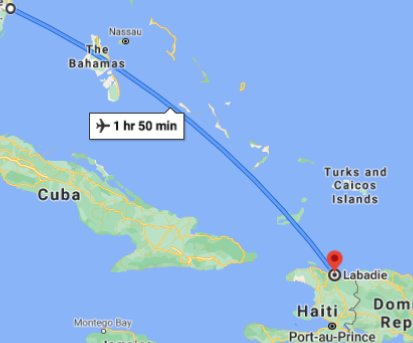


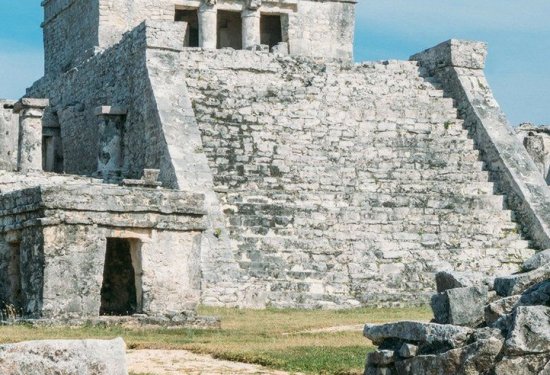
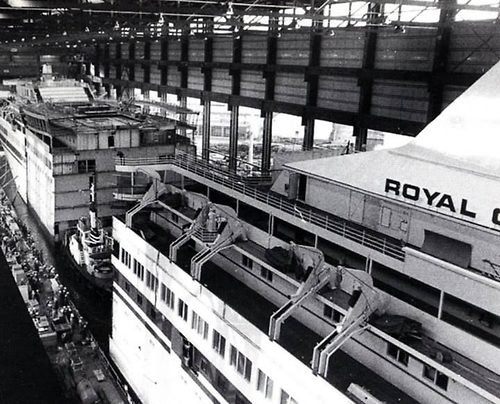
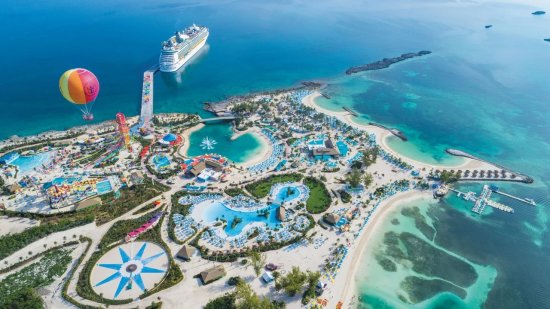
Pingback: 1981-1988 Life in Rockville: Trips and Visits | Wavablog